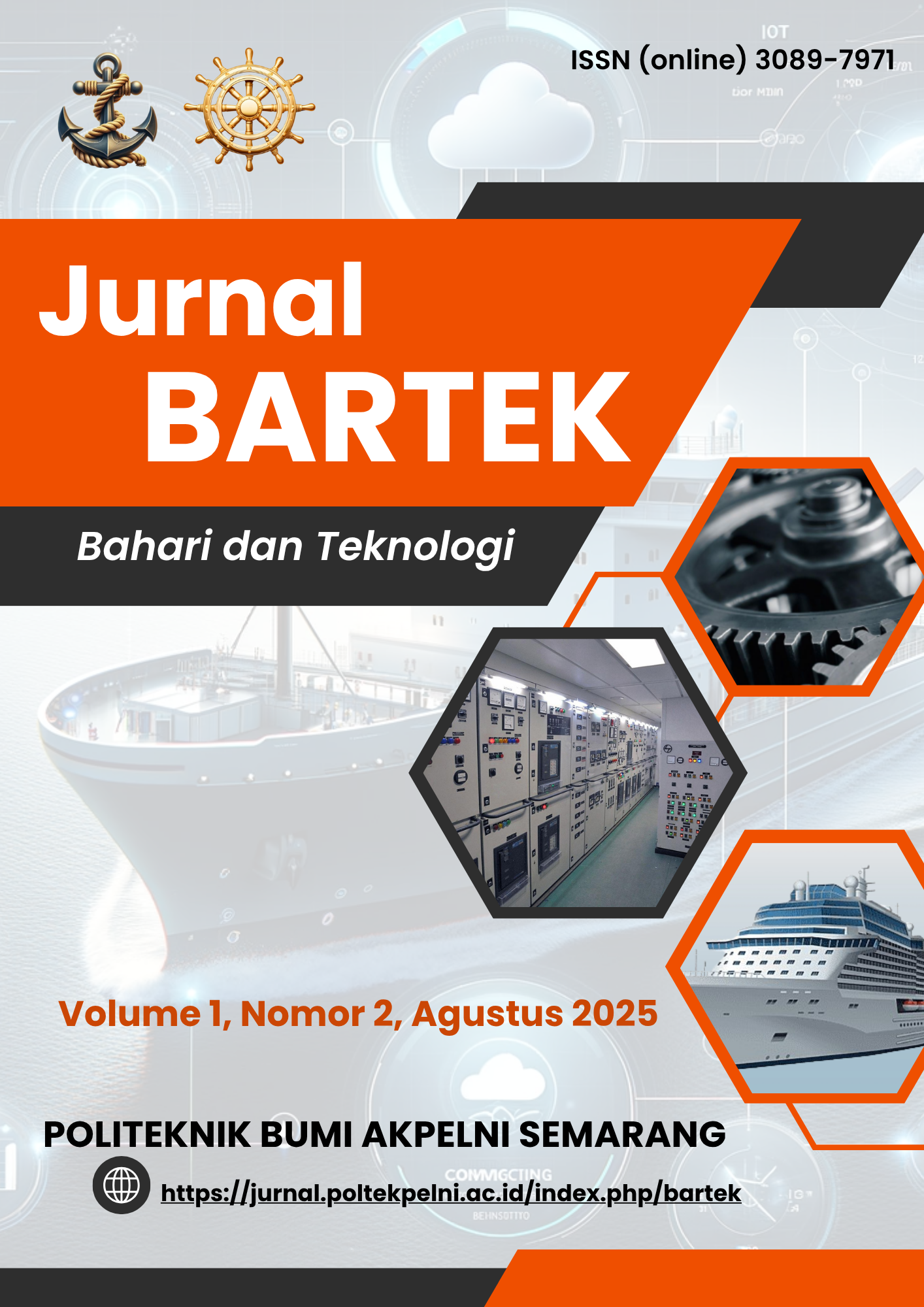Evaluasi Peran Push Rod sebagai Perangkat Protektif Pasif pada Valve Train Mesin Diesel
DOI:
https://doi.org/10.6425/cq16hx29Keywords:
deformation, mechanical fuse, push rod, rocker arm, tightening torqueAbstract
The push rod is a critical component connecting the camshaft and rocker arm in diesel engine valve systems. Besides transmitting force, it can function as a safety device by undergoing deformation under excessive load, preventing further damage to the rocker arm. This study aims to evaluate the protective function of the push rod based on field observations on the NINGBO N6160ZLCD6 diesel engine aboard MV Gulf Mas. The methodology includes measuring push rod bending angles, compression testing to determine deformation thresholds, and comparing push rod torque with rocker arm bolt torque. The results indicate gradual deformation of the push rod from 3° to 4°, with a significant deformation increase beyond 30 Nm. The push rod's working torque (34 Nm) is lower than the standard torque for rocker arm bolts (45 Nm), although field measurements show several bolts were tightened below the standard. These findings suggest that the push rod acts effectively as a controlled weak point (mechanical fuse), but system performance also depends on the integrity of bolt fastening.
Downloads
Published
Issue
Section
License
Copyright (c) 2025 JURNAL BAHARI DAN TEKNOLOGI (BARTEK)

This work is licensed under a Creative Commons Attribution-ShareAlike 4.0 International License.








